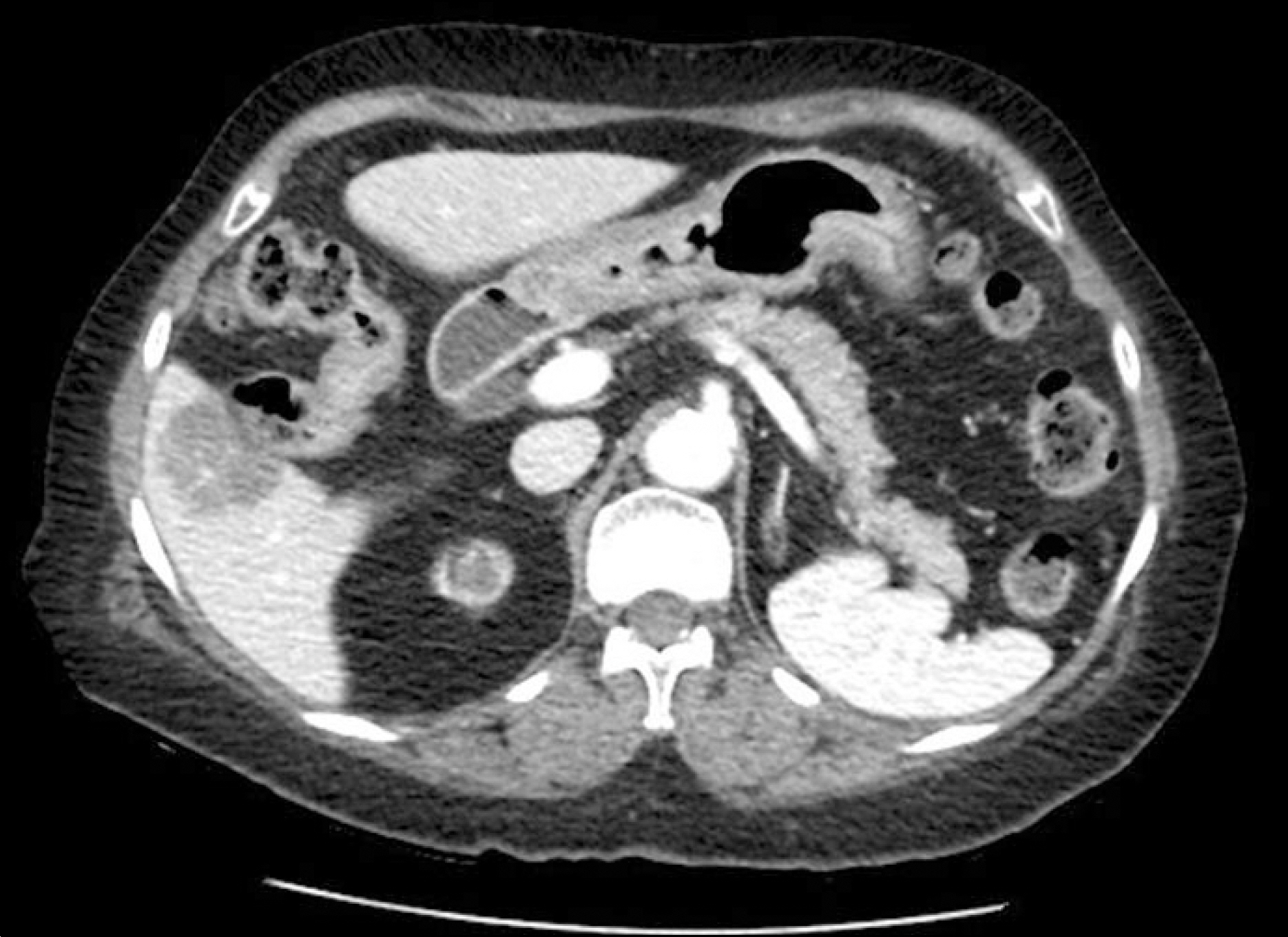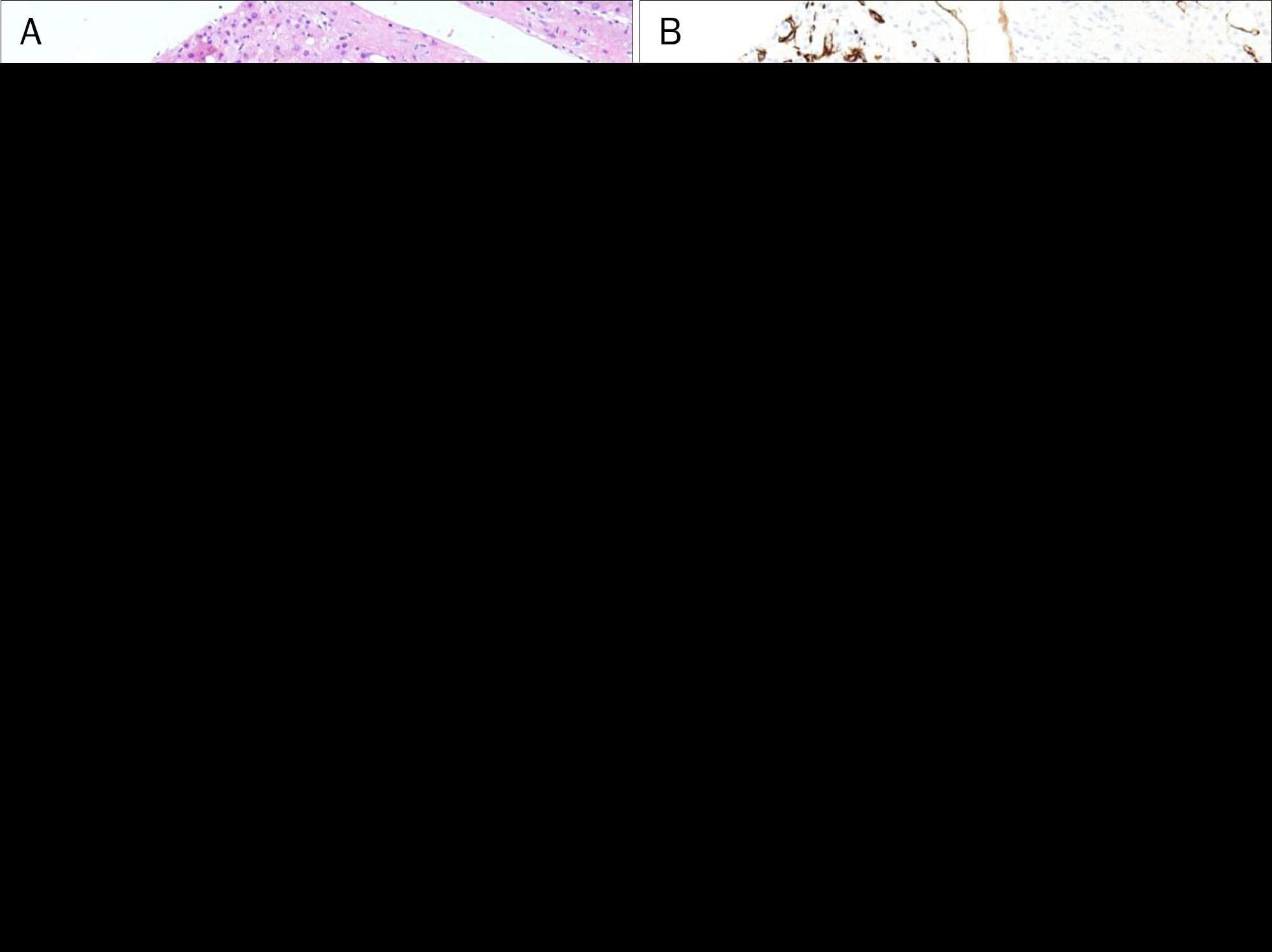Korean J Gastroenterol.
2015 Jul;66(1):59-63. 10.4166/kjg.2015.66.1.59.
Inflammatory Hepatic Adenoma
- Affiliations
-
- 1Department of Internal Medicine, Yonsei University College of Medicine, Seoul, Korea. ksukorea@yuhs.ac
- 2Department of Pathology, Yonsei University College of Medicine, Seoul, Korea.
- 3Department of Radiology, Yonsei University College of Medicine, Seoul, Korea.
- KMID: 2373314
- DOI: http://doi.org/10.4166/kjg.2015.66.1.59
Abstract
- No abstract available.
MeSH Terms
-
Adenoma, Liver Cell/*diagnosis/diagnostic imaging/pathology
Aged
Antigens, CD34/metabolism
Bile Ducts, Intrahepatic/pathology
C-Reactive Protein/metabolism
Female
Humans
Liver Neoplasms/*diagnosis/diagnostic imaging/pathology
Magnetic Resonance Imaging
Serum Amyloid A Protein/metabolism
Tomography, X-Ray Computed
Antigens, CD34
C-Reactive Protein
Serum Amyloid A Protein
Figure
Reference
-
References
1. Saxena R. Practical hepatic pathology: a diagnostic approach. Philadelphia, PA: Elsevier;2011. p. 473–488.2. Agrawal S, Agarwal S, Arnason T, Saini S, Belghiti J. Management of hepatocellular adenoma: recent advances. Clin Gastroenterol Hepatol. 2015; 13:1221–1230.
Article3. Dhingra S, Fiel MI. Update on the new classification of hepatic adenomas: clinical, molecular, and pathologic characteristics. Arch Pathol Lab Med. 2014; 138:1090–1097.
Article4. Han JK, Eun HW, Kim SH. Imaging findings of hepatic adenoma. Korean J Hepatol. 2008; 14:405–410.
Article5. Ichikawa T, Federle MP, Grazioli L, Nalesnik M. Hepatocellular adenoma: multiphasic CT and histopathologic findings in 25 patients. Radiology. 2000; 214:861–868.
Article6. Grazioli L, Morana G, Kirchin MA, Schneider G. Accurate differentiation of focal nodular hyperplasia from hepatic adenoma at gadobenate dimeglumine-enhanced MR imaging: prospective study. Radiology. 2005; 236:166–177.
Article7. van Aalten SM, Thomeer MG, Terkivatan T, et al. Hepatocellular adenomas: correlation of MR imaging findings with pathologic subtype classification. Radiology. 2011; 261:172–181.
Article8. Bioulac-Sage P, Laumonier H, Couchy G, et al. Hepatocellular adenoma management and phenotypic classification: the Bordeaux experience. Hepatology. 2009; 50:481–489.
Article9. Farges O, Dokmak S. Malignant transformation of liver adenoma: an analysis of the literature. Dig Surg. 2010; 27:32–38.
Article10. Ahn SY, Park SY, Kweon YO, Tak WY, Bae HI, Cho SH. Successful treatment of multiple hepatocellular adenomas with percutaneous radiofrequency ablation. World J Gastroenterol. 2013; 19:7480–7486.
Article11. Nasser F, Affonso BB, Galastri FL, Odisio BC, Garcia RG. Minimally invasive treatment of hepatic adenoma in special cases. Einstein (Sao Paulo). 2013; 11:524–527.
- Full Text Links
- Actions
-
Cited
- CITED
-
- Close
- Share
- Similar articles
-
- Long-term Outcome of Glycogen Storage Disease Type 1; Analysis of Risk Factors for Hepatic Adenoma
- A Case of Tubular Adenoma of the Common Hepatic Duct Accompanied with Gallbladder Carcinoma
- Hepatocellular Adenoma and Focal Nodular Hyperplasia
- Development of Hepatocellular Carcinoma in Patients with Glycogen Storage Disease: a Single Center Retrospective Study
- Extrauterine Adenomyoma of the Liver Mimicking a Hepatic Adenoma: A Case Report






